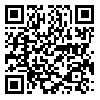Volume 32, Issue 4 (1-2020)
J Dent Med-tums 2020, 32(4): 208-215 |
Back to browse issues page
Download citation:
BibTeX | RIS | EndNote | Medlars | ProCite | Reference Manager | RefWorks
Send citation to:



BibTeX | RIS | EndNote | Medlars | ProCite | Reference Manager | RefWorks
Send citation to:
Dehghani Nazhvani A, Razmkhah M, Jassbi A, Khademalizadeh M, Mahmoodi A. Evaluation of anticancer effect of Hibiscus Sabdarifa, Otostegia Persica Otostegia Aucheri, and Otostegia Michauxii on oral squamous cell carcinoma cell line. J Dent Med-tums 2020; 32 (4) :208-215
URL: http://jdm.tums.ac.ir/article-1-5949-en.html
URL: http://jdm.tums.ac.ir/article-1-5949-en.html
Ali Dehghani Nazhvani1 
 , Mahboobeh Razmkhah2
, Mahboobeh Razmkhah2 
 , Amirreza Jassbi3
, Amirreza Jassbi3 
 , Mohammadreza Khademalizadeh4
, Mohammadreza Khademalizadeh4 
 , Afsoon Mahmoodi *
, Afsoon Mahmoodi * 
 5
5

 , Mahboobeh Razmkhah2
, Mahboobeh Razmkhah2 
 , Amirreza Jassbi3
, Amirreza Jassbi3 
 , Mohammadreza Khademalizadeh4
, Mohammadreza Khademalizadeh4 
 , Afsoon Mahmoodi *
, Afsoon Mahmoodi * 
 5
5
1- Assistant Professor, Department of Oral & Maxillofacial Pathology, School of Dentistry, Shiraz University of Medical Sciences, Shiraz, Iran
2- Assistant Professor, Department of Immunology, School of Medicine Shiraz University of Medical Sciences, School of Dentistry, Shiraz, Iran; Member of Shiraz Institute for Cancer Research (ICR), Shiraz University of Medical Sciences, Shiraz, Iran
3- Associate Professor, Department of Phytochemistry, Faculty of Pharmacy, Shiraz University of Medical Science; Member of Medicinal and Natural Products Reasearch Center, Shiraz University of Medical Sciences, Shiraz, Iran
4- Student Research Committee, School of Medicine, Shiraz University of Medical Sciences, Shiraz, Iran
5- Student research committee, School of Dentistry, Shiraz University of Medical Sciences, Shiraz, Iran
2- Assistant Professor, Department of Immunology, School of Medicine Shiraz University of Medical Sciences, School of Dentistry, Shiraz, Iran; Member of Shiraz Institute for Cancer Research (ICR), Shiraz University of Medical Sciences, Shiraz, Iran
3- Associate Professor, Department of Phytochemistry, Faculty of Pharmacy, Shiraz University of Medical Science; Member of Medicinal and Natural Products Reasearch Center, Shiraz University of Medical Sciences, Shiraz, Iran
4- Student Research Committee, School of Medicine, Shiraz University of Medical Sciences, Shiraz, Iran
5- Student research committee, School of Dentistry, Shiraz University of Medical Sciences, Shiraz, Iran
Abstract: (3207 Views)
Background and Aims: Oral squamous cell carcinoma (OSCC) is one of the most prevalent oral cancers with increased risk in individuals younger than 40 years especially in developed countries. There are many evidences that people who have plenty of fruits and vegetables in their diets tend to have lower risk of cancer. In this study, we evaluated the anticancer effect of four medicinal plants of Otostegia Persica, Otostegia Michauxii, Otostegia Aucheri, and Hibiscus Sabdariffa on OSCC cell lines.
Materials and Methods: In this study, methanolic & dichloromethane extracts of the above medicinal plants were used in order to evaluate their effect on oral squamous cell carcinoma cell line in different concentrations and after 24 , 48 and 72 hrs by MTT assay test. Finally, the appropriate concentration for repeating the test were chosen.
Results: In this study, the mean amounts of IC50 for O. persica and O. Aucheri were less than the two other herbs and the least and most amount of IC50 were related to the dicloromethanolic extract of O. persica after 72 hrs and the water extract of H. sabdariffa after 24 hrs, respectively.
Conclusion: It was concluded that all of the plants evaluated especially O.Persica and O.Aucheri had anticancer properties and dichloromethalonic extracts of these plant were more effective than that of methanolic extract.
Type of Study: Research |
Subject:
general
Received: 2020/05/2 | Accepted: 2020/05/2 | Published: 2020/05/2
Received: 2020/05/2 | Accepted: 2020/05/2 | Published: 2020/05/2
| Rights and Permissions | |
 |
This work is licensed under a Creative Commons Attribution-NonCommercial 4.0 International License. |


